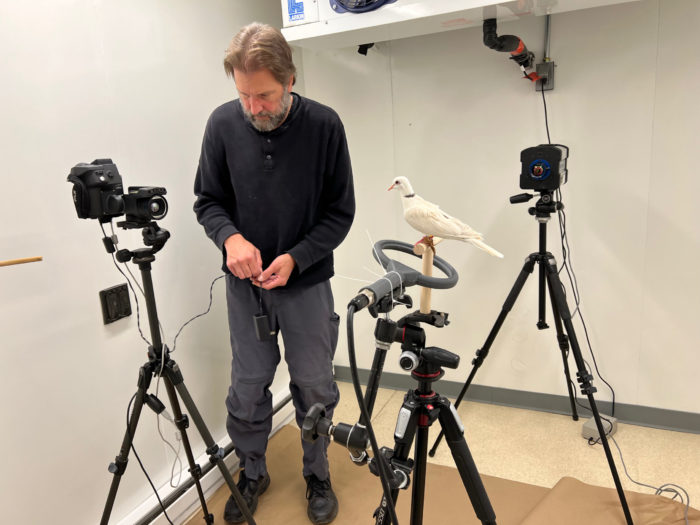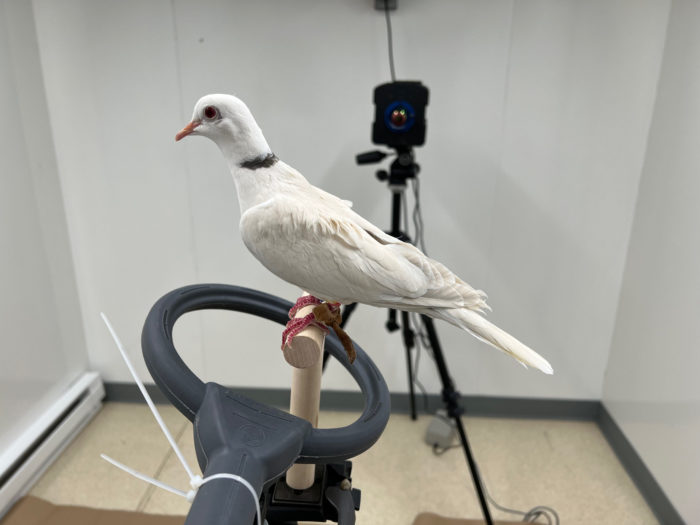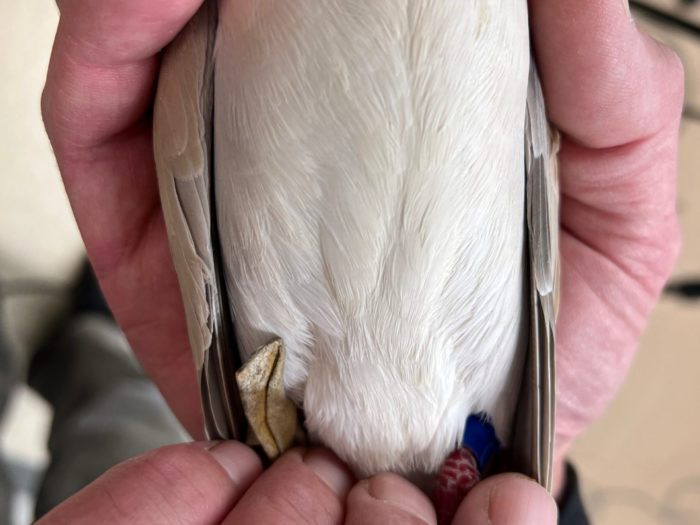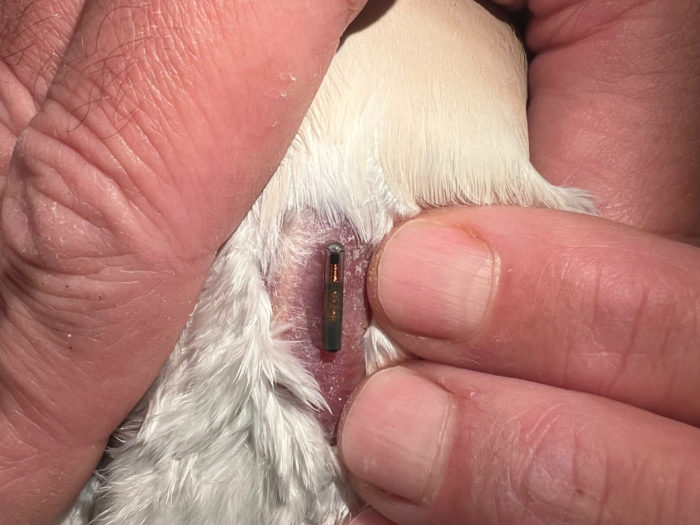Don traveled to the University of Montana to some quick experiments with friend and collaborator Dr. Bret Tobalske. For the first time they will be working solely with Eurasian collared doves to 1) begin expansion of their heat dissipation during flight work to non-hummingbirds, and 2) test whether or not gluing thermal pit tags to the skin over the flight muscles is an effective way to measure skin surface temperature beneth the breast plumage. The doves were also large enough that they could insert a thermal pit tag into the dove’s abdominal cavity to measure core body temperature. The goal will be to simultaneously measure core body temperature and skin surface temperature above the flight muscles using the thermal pit tags, and breast plumage surface temperature over the flight muscles using infrared thermography. Measurements were made both for flight and perching. The goal is to gain a better understanding of how rapidly core body heat moves across the plumage for dissipation into the environment.
 Nature
Nature- Are we living in a parallel universe? The strange physics of <i>Stranger Things</i> December 19, 2025
- Oddly cool super-hot planet has an atmosphere it shouldn’t December 19, 2025
- Author Correction: Cryo-EM structure of a natural RNA nanocage December 19, 2025
 Science
Science- CDC funds controversial hepatitis B vaccine trial in African newborns December 18, 2025
- Our favorite science news stories of 2025 December 18, 2025
- Why are women more likely to get irritable bowel syndrome? New study provides clues December 18, 2025
 AJP – Regulatory, Integrative and Comparative Physiology
AJP – Regulatory, Integrative and Comparative Physiology- Biological aging and sex differences in cholinergic sweating: from young adults to the elderly in their 80s and beyond December 17, 2025
- Neonatal hyperoxia exposure does not exacerbate hypertension programmed by maternal obesity December 17, 2025
- NPY inhibits vagal activation of NTS catecholamine neurons via presynaptic Y2 receptors December 15, 2025
Powers Lab Links







